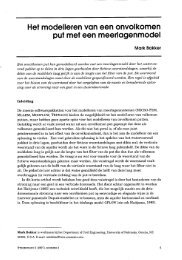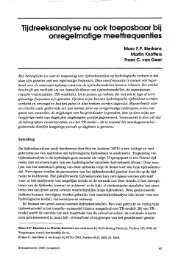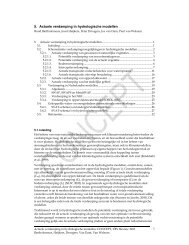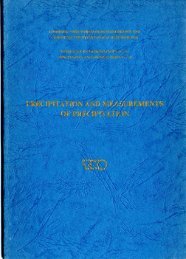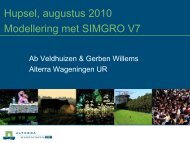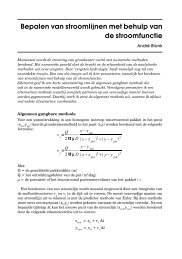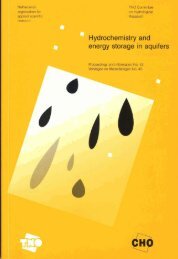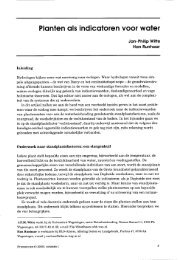Hydro-ecological relations in the Delta Waters
Hydro-ecological relations in the Delta Waters
Hydro-ecological relations in the Delta Waters
You also want an ePaper? Increase the reach of your titles
YUMPU automatically turns print PDFs into web optimized ePapers that Google loves.
Table 3<br />
Biomass of macroroobenthos and densities of waders and div<strong>in</strong>g<br />
ducks <strong>in</strong> <strong>the</strong> different has<strong>in</strong>s af <strong>the</strong> <strong>Delta</strong> =ea. The average<br />
autumn biomass (g ash free dry weight/m2) of <strong>the</strong> whole bas<strong>in</strong><br />
and of <strong>the</strong> <strong>in</strong>tertidal area and <strong>the</strong> density Q£ waders and<br />
duoks (birds1100 ha) are given. (Source of macrozoobenthos<br />
data: (1) Craeymeersch (pers. cam.) (2) Coosen and Van den<br />
Dool, 1983 (3) Coosen and Smaal, 1985 (41 Meire and Develter,<br />
1988 (5) Lamheck, et al, 1985, 1986, 1987. (6) Seys and<br />
Meire, 1988 (7) Fortu<strong>in</strong>. 1985.) For abbreviations see<br />
Table 2.<br />
Bas<strong>in</strong> biomass hiamass source waders div<strong>in</strong>g<br />
overall <strong>in</strong>tertidal ducks<br />
is not lmam and hence it is not possible to calculate <strong>the</strong> available<br />
food supply. Div<strong>in</strong>g ducks like Goldeneyes and Tufted Ducks feed ma<strong>in</strong>ly<br />
on molluscs (Zebra Mussels, Mussels, Cockles etc.) as well as on<br />
different species of wow and crustaceans. A relation between<br />
macrobenthic biomass and <strong>the</strong> density of div<strong>in</strong>g ducks is not clear at<br />
all. The highest densities of div<strong>in</strong>g ducks are found <strong>in</strong> <strong>the</strong> Veerse<br />
Meet, although <strong>the</strong> biomaes is lower than <strong>in</strong> o<strong>the</strong>r areas. Additionally<br />
<strong>in</strong> <strong>the</strong> freshwater lakes high densities of div<strong>in</strong>g ducks are found<br />
although <strong>the</strong> benthos biamass is very Low. On <strong>the</strong> o<strong>the</strong>r hand <strong>in</strong> both <strong>the</strong><br />
Qosterschelde and <strong>the</strong> Krammer-Volkerak a larpe benthos biomaas is<br />
present but remsrkably low densities of div<strong>in</strong>g ducks are found. Clearly<br />
o<strong>the</strong>r factors must <strong>in</strong>fluence <strong>the</strong> distrihutfon of <strong>the</strong>se birds. This will<br />
be discussed later.





